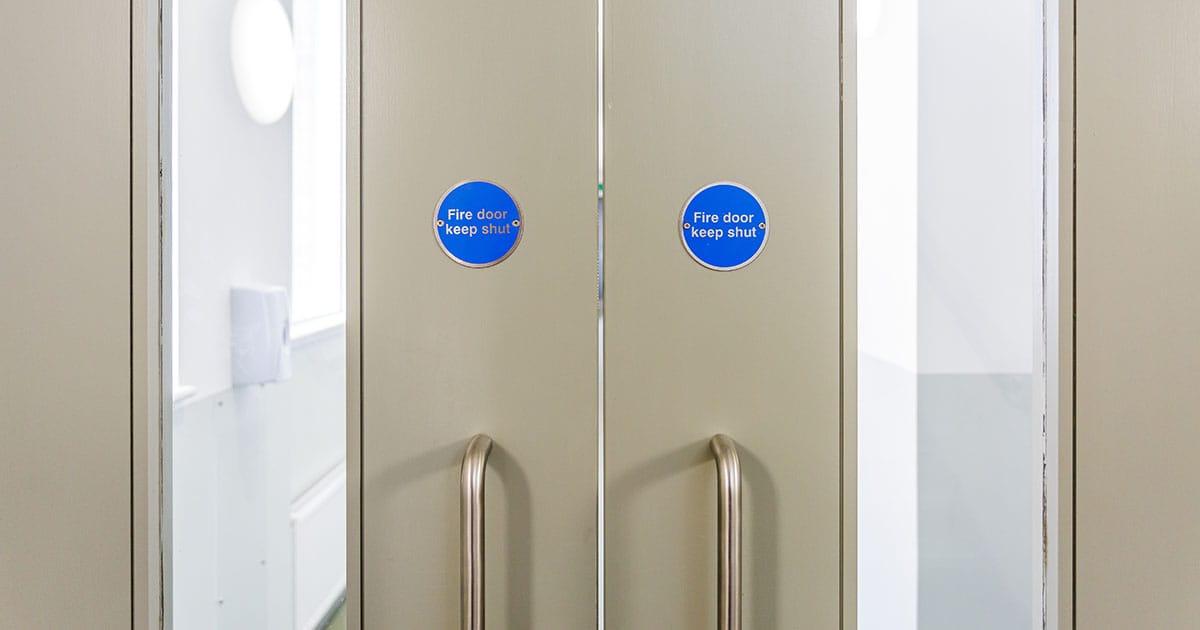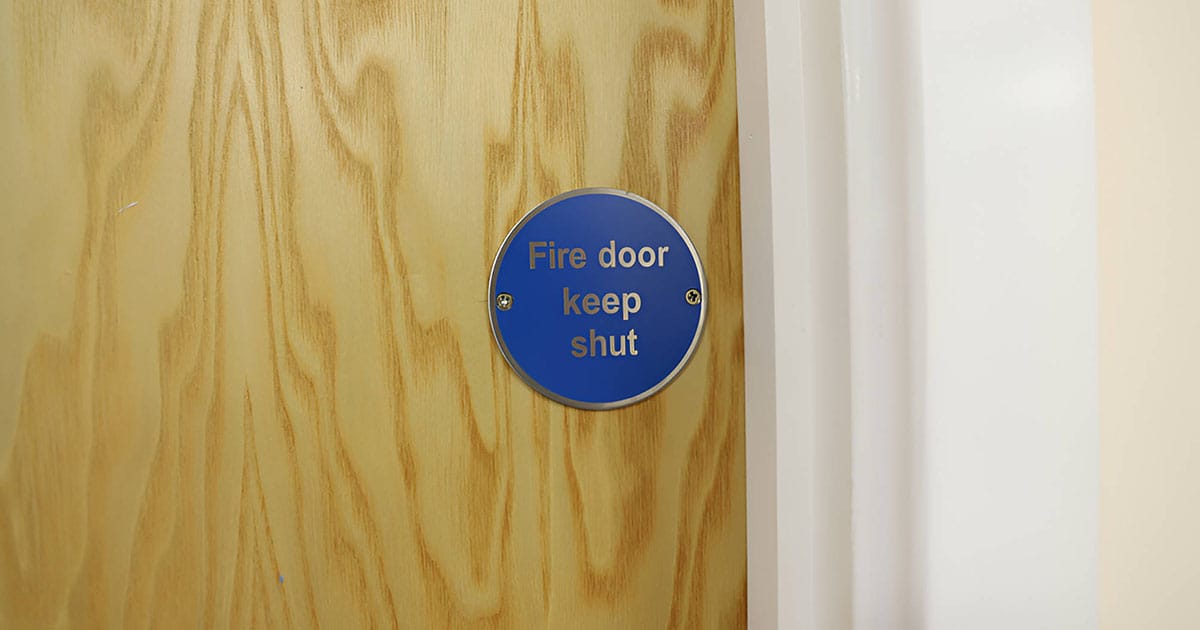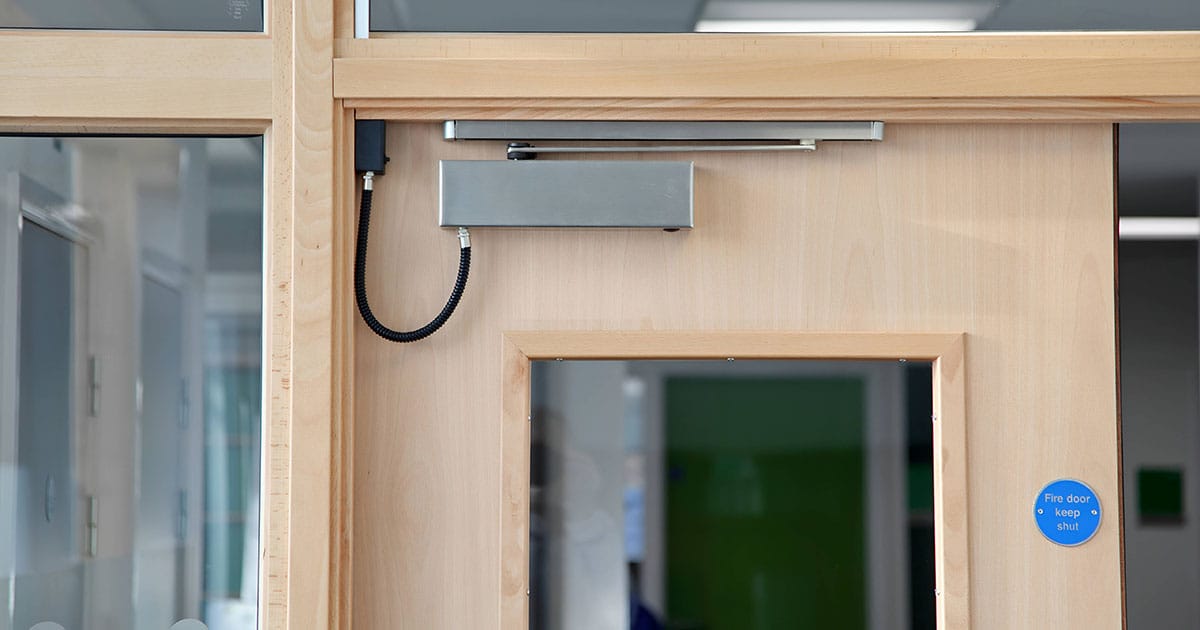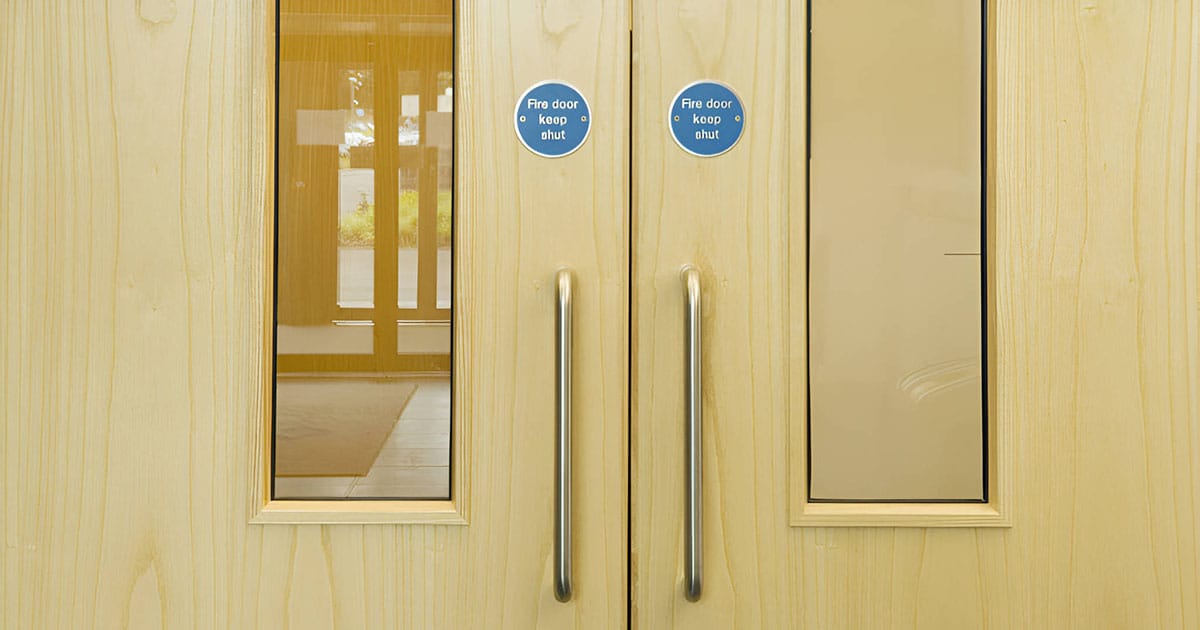Protecting Lives and Property: The Importance of Fire Doors
Fires are unpredictable and devastating events that can occur anywhere, at any time. Whether at home, in a commercial building, or an industrial facility, the need for fire safety measures cannot be overstated. Among the crucial components in a comprehensive fire safety plan, fire doors stand out as a frontline defence against the spread of flames, smoke, and toxic fumes.
In this blog, we'll delve into the significance of fire doors, the different types available, recommended servicing intervals, installation guidelines, and the fire safety standards governing their design and usage.

Why Are Fire Doors So Important?
Fire doors play a critical role in compartmentalising a building, preventing the rapid spread of fire from one area to another. They are designed to maintain the structural integrity of the building, creating a barrier that keeps flames, heat, and smoke confined to a designated fire compartment for a specified period. This containment buys time for people to evacuate safely, minimising the risk of injuries and fatalities. Additionally, fire doors protect valuable assets and reduce the financial impact of fire-related incidents.

Types of Fire Doors
Fire doors come in various types, and their classification is based on their fire resistance capabilities:
- FD30/FD30s: These doors offer 30 minutes of fire resistance and are suitable for domestic properties, small offices, and storage cupboards.
- FD60/FD60s: Providing 60 minutes of fire resistance, FD60 doors are ideal for larger buildings and areas with higher fire risk.
- FD120: For specific hazardous environments, such as chemical storage or industrial facilities, FD120 doors offer 120 minutes of fire resistance.
- Glazed Fire Doors: These fire doors have fire-resistant glass panels, allowing visibility while still providing fire protection.

When to Install Fire Doors
Fire doors should be an integral part of any building's design and construction. The specific areas where fire doors are required depend on building regulations and fire safety assessments. Generally, fire doors should be installed in the following locations:
- Fire Escape Routes: All escape routes, including stairwells, corridors, and passageways, should have fire doors to protect the path of egress.
- Compartment Walls: Any wall that separates different sections of a building should be fitted with fire doors to maintain compartmentalisation.
- High-Risk Areas: Places with a higher risk of fire, like kitchen areas or boiler rooms, require fire doors to limit the fire's spread.

How Often to Service Fire Doors
To ensure fire doors remain effective, regular maintenance and servicing are essential. The recommended service intervals may vary depending on local regulations, but a general guideline is to have fire doors inspected and maintained at least every six months. The servicing should include checks for:
- Functionality: The door should open and close smoothly, and self-closing mechanisms should work correctly.
- Integrity of Seals: Fire door seals are crucial for containing smoke and fire, so they must be in good condition.
- Hinges and Hardware: Hinges, handles, and locks should be secure and operational.
- Clearance Gaps: The gaps between the door and the frame should meet the manufacturer's specifications.
As of January 23 2023, all managers of residential property over 11m must meet their obligations under The Fire Safety (England) Regulations 2022 in relation to fire doors. Fire Guard Services offer full fire door audits to ensure that you and your premises is compliant with fire safety standards. Contact us today for a free quote or call us on 01582 469000
